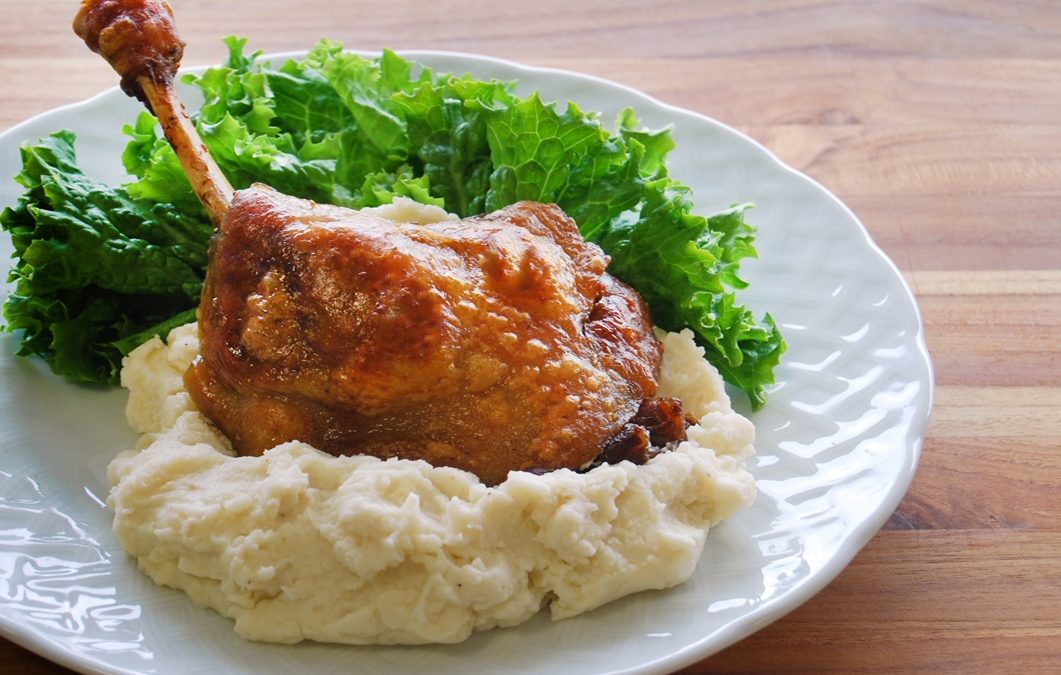 What is confit? Very simply, it is a French word meaning “preserved.” More specifically, it is a pre-refrigeration strategy for meat preservation. In this case, we are talking about duck leg; meaty, delicious, and cooked in duck fat and aromatics for hours. This makes it tender and helps to preserve the meat.
What is confit? Very simply, it is a French word meaning “preserved.” More specifically, it is a pre-refrigeration strategy for meat preservation. In this case, we are talking about duck leg; meaty, delicious, and cooked in duck fat and aromatics for hours. This makes it tender and helps to preserve the meat.
Traditionally, duck leg confit would be stored in jars of duck fat, with a layer of pork fat on top for good measure. These pots of confit would make it through winter in a cool basement or root cellar. Today it is kept in vacuum-sealed bags in the refrigerator, but the flavor is just as satisfying.
In the early days of D’Artagnan duck was the first product we sold. In our “everything but the quack” philosophy, we put each part to good use. Along with foie gras and duck breast, the moulard duck provides hefty legs that lend themselves to confit… and plenty of duck fat for cooking them. And so we started making vats of duck confit!
Technically speaking, duck confit falls in the broad and glorious category that ischarcuterie. All smoked, cured, and cooked meats belong there; your favorites likebacon, ham, salami, prosciutto are all charcuterie.
Eating Duck Confit
Duck leg confit is one of those items that makes life better. It’s already fully cooked, so it’s ready to eat: seared, broiled, shredded into salads, tacos, pasta, over potatoes or other vegetables. On a pizza, or in a sandwich, duck confit is the ultimate in versatility. You can even serve it like a chicken leg; just broil it to crisp the skin. It’s a favorite weeknight fast food.

And of course, duck confit is a vital ingredient in our cassoulet, that hearty dish of beans, duck and pork sausage that is a favorite one-pot French meal. Or as we like to think of it: a party in a bowl.

For more recipe ideas, head to dartagnan.com. And feel free to share your duck confit creations with us on Facebook, Twitter or Instagram. Tag @dartagnanfoods so we can see what’s cooking!
